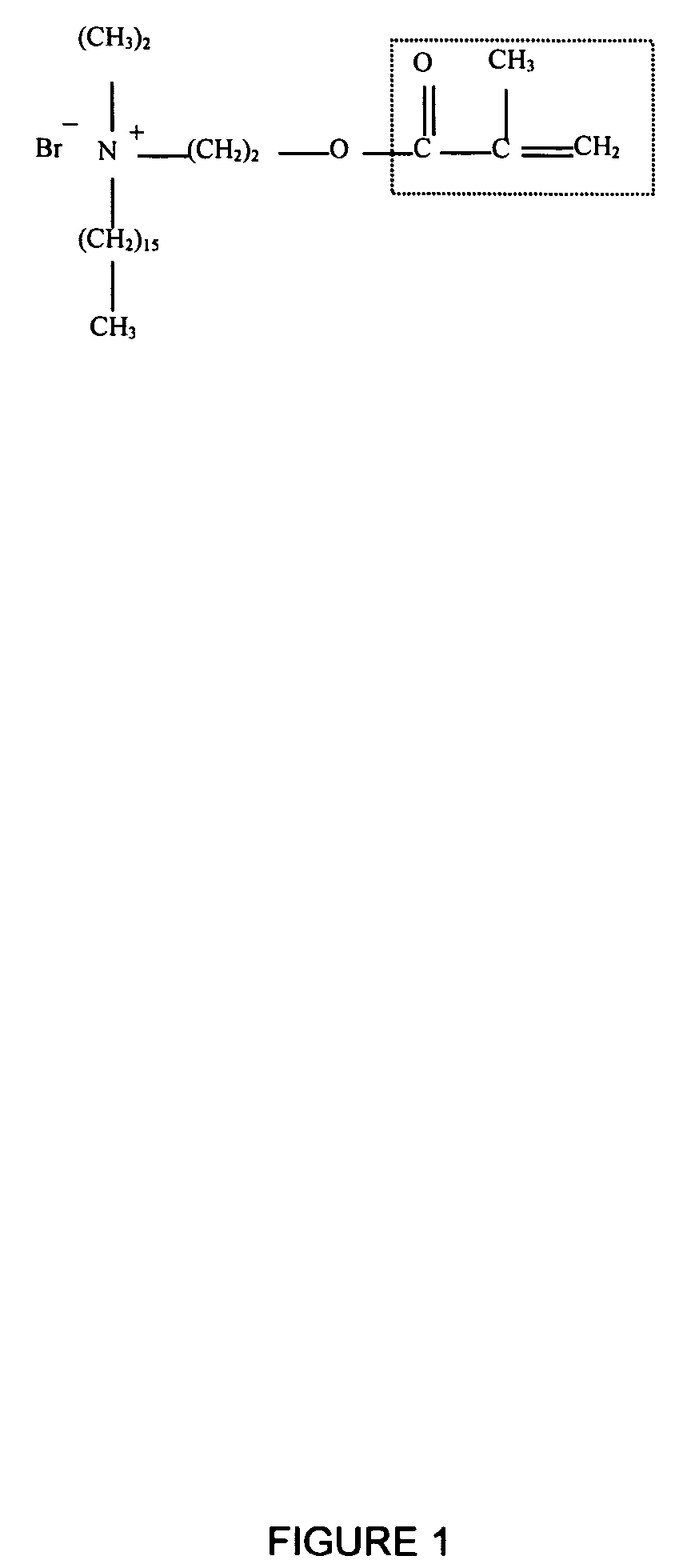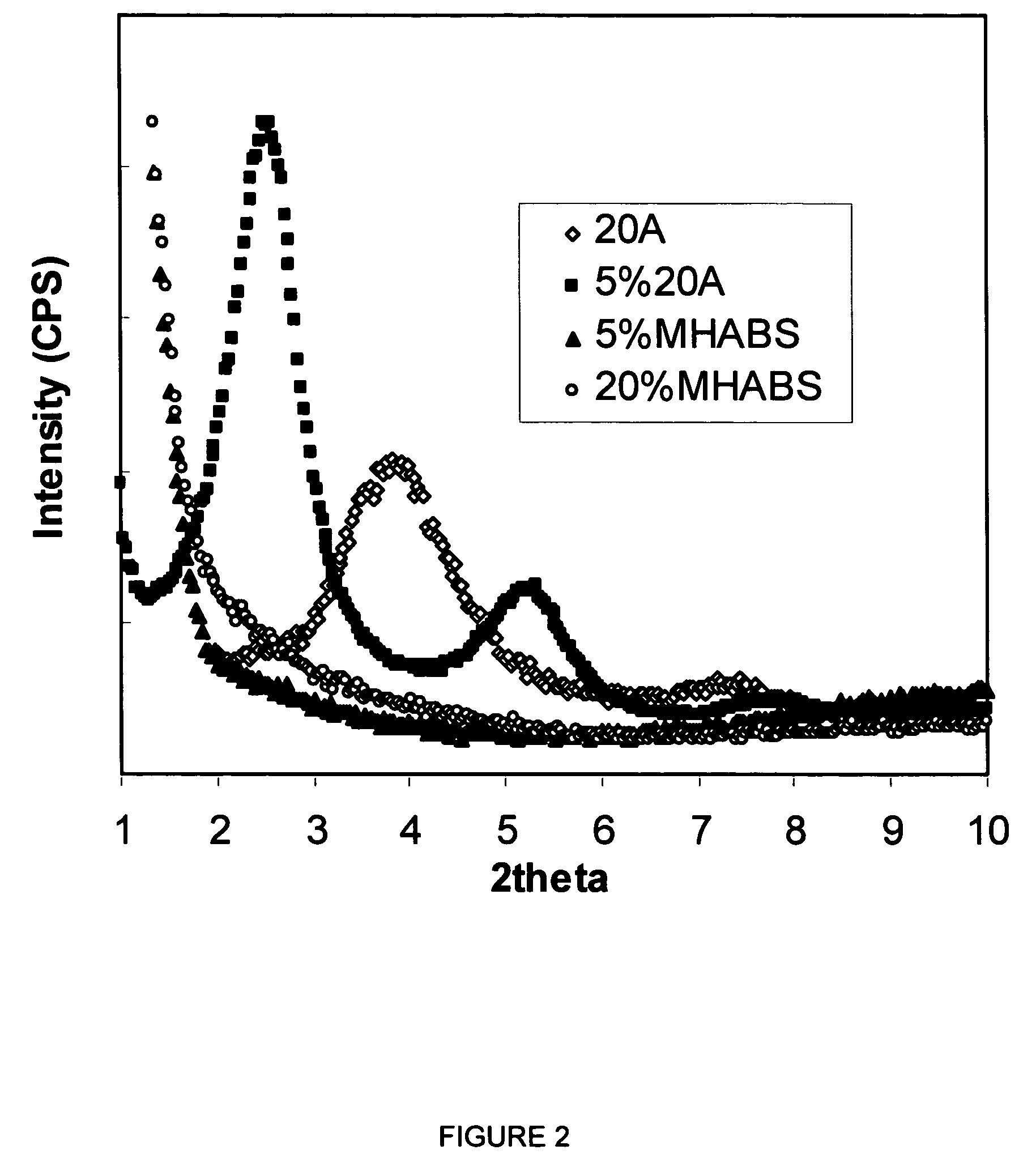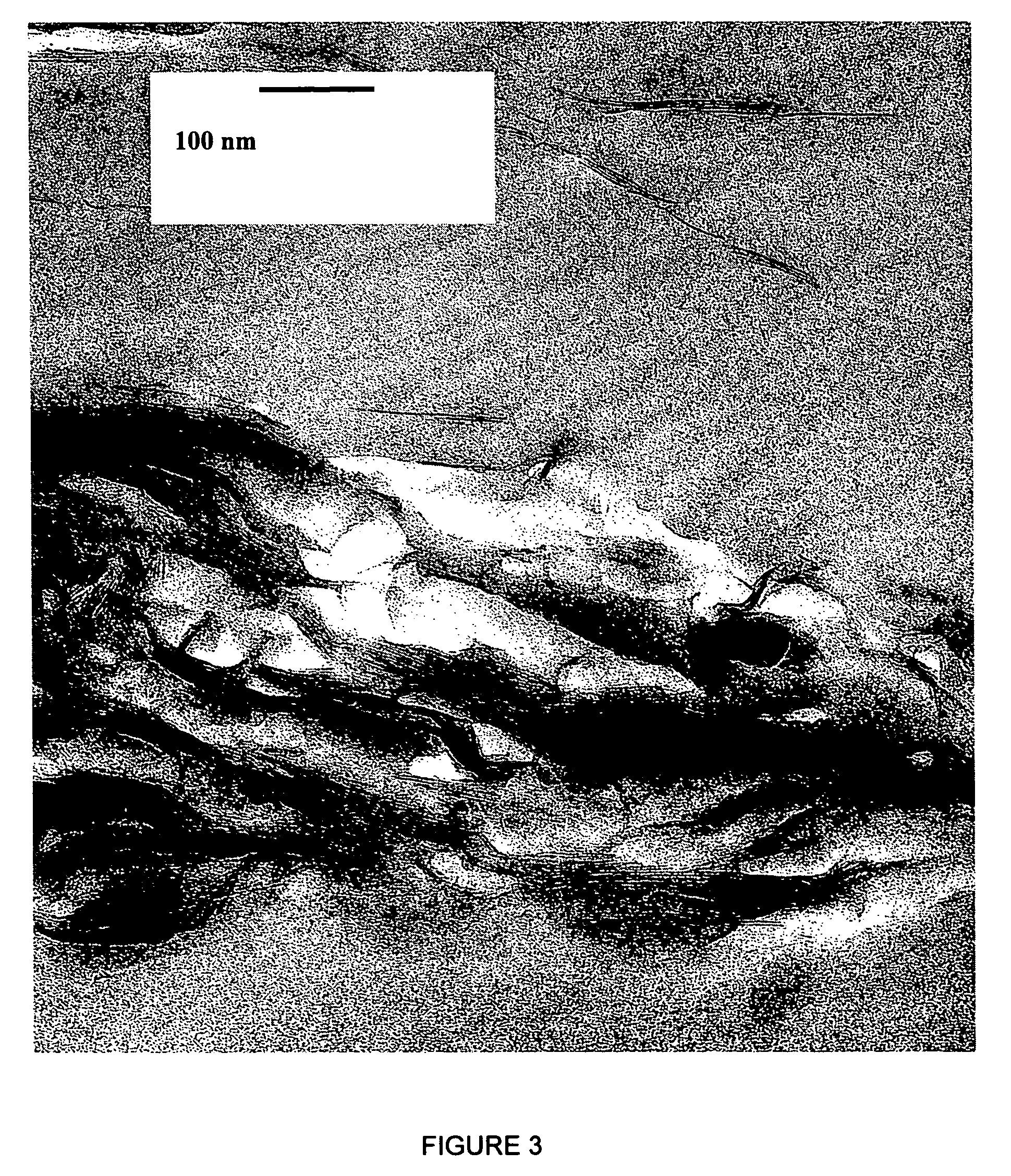Polymer nanocomposite foams
a technology of polymer nanocomposite foam and polymer nanocomposite, which is applied in the field of polymer foam, can solve the problems of hydrophilicity in nature of clay and incompatibility with most polymers
- Summary
- Abstract
- Description
- Claims
- Application Information
AI Technical Summary
Benefits of technology
Problems solved by technology
Method used
Image
Examples
Embodiment Construction
)
[0063]In accordance with the foregoing summary, the following presents a detailed description of the preferred embodiments of the invention that is currently considered to be the best mode.
[0064]Materials. Styrene (St), Methyl Methalcrylate (MMA) and initiator 2,2′-azobisisobutyronitrile (AlBN), were purchased from Aldrich. A polystyrene resin (Fina) was used to prepare nanocomposites by extrusion. Two types of organically modified montmorillonite clays were used in this study. Cloisite 20A (20A) was donated by Southern Clay. The interlayer cation is dimethyl dehydrogenated tallowalkyl ammonium onium. Na+-montmorillonite (CEC=90 meq / 100 g) was also from Southern Clay. A reactive cationic surfactant 2-methacryloyloxyethylhexadecylditnethyl ammonium bromide (MHAB) was synthesized and ion-exchanged with Na+-montmorillonite to prepare the organophilic clay, according to the procedure published elsewhere. The chemical structure of the surfactant MHAB is shown in FIG. 1. The modified cla...
PUM
| Property | Measurement | Unit |
|---|---|---|
| average cell size | aaaaa | aaaaa |
| average cell size | aaaaa | aaaaa |
| critical pressure Pc | aaaaa | aaaaa |
Abstract
Description
Claims
Application Information
 Login to View More
Login to View More - R&D
- Intellectual Property
- Life Sciences
- Materials
- Tech Scout
- Unparalleled Data Quality
- Higher Quality Content
- 60% Fewer Hallucinations
Browse by: Latest US Patents, China's latest patents, Technical Efficacy Thesaurus, Application Domain, Technology Topic, Popular Technical Reports.
© 2025 PatSnap. All rights reserved.Legal|Privacy policy|Modern Slavery Act Transparency Statement|Sitemap|About US| Contact US: help@patsnap.com



